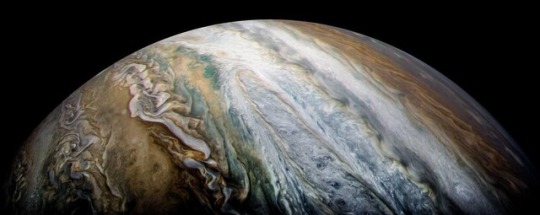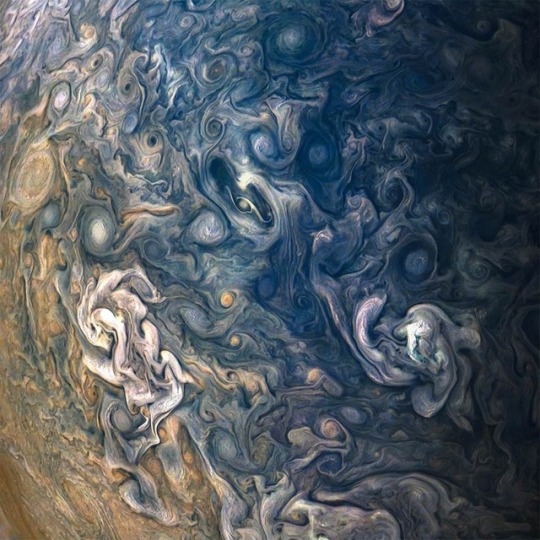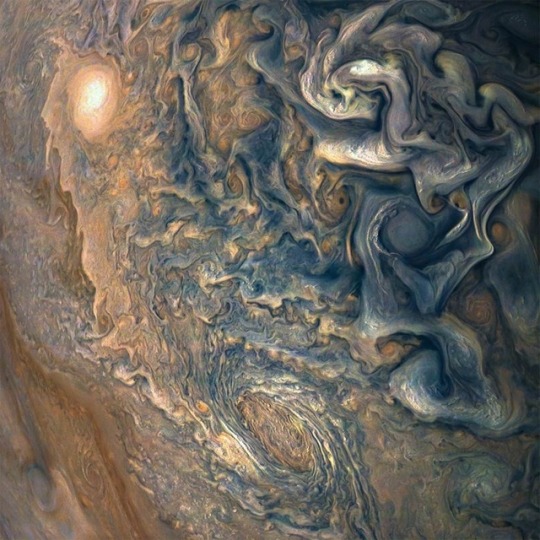Text
🌌🚀🛰
Sixty Years of Exploration, Innovation, and Discovery!

Exactly sixty years ago today, we opened our doors for the first time. And since then, we have opened up a universe of discovery and innovation.
There are so many achievements to celebrate from the past six decades, there’s no way we can go through all of them. If you want to dive deeper into our history of exploration, check out NASA: 60 Years and Counting.
In the meantime, take a moonwalk down memory lane with us while we remember a few of our most important accomplishments from the past sixty years!

In 1958, President Eisenhower signed the National Aeronautics and Space Act, which effectively created our agency. We officially opened for business on October 1.
To learn more about the start of our space program, watch our video: How It All Began.

Alongside the U.S. Air Force, we implemented the X-15 hypersonic aircraft during the 1950s and 1960s to improve aircraft and spacecraft.
The X-15 is capable of speeds exceeding Mach 6 (4,500 mph) at altitudes of 67 miles, reaching the very edge of space.
Dubbed the “finest and most productive research aircraft ever seen,” the X-15 was officially retired on October 24, 1968. The information collected by the X-15 contributed to the development of the Mercury, Gemini, Apollo, and Space Shuttle programs.
To learn more about how we have revolutionized aeronautics, watch our Leading Edge of Flight video.
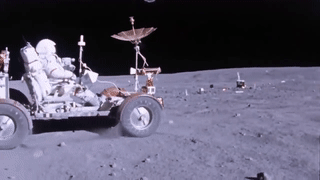
On July 20, 1969, Neil Armstrong and Buzz Aldrin became the first humans to walk on the moon. The crew of Apollo 11 had the distinction of completing the first return of soil and rock samples from beyond Earth.
Astronaut Gene Cernan, during Apollo 17, was the last person to have walked on the surface of the moon. (For now!)
The Lunar Roving Vehicle was a battery-powered rover that the astronauts used during the last three Apollo missions.
To learn more about other types of technology that we have either invented or improved, watch our video: Trailblazing Technology.

Our long-term Earth-observing satellite program began on July 23, 1972 with the launch of Landsat 1, the first in a long series (Landsat 9 is expected to launch in 2020!) We work directly with the U.S. Geological Survey to use Landsat to monitor and manage resources such as food, water, and forests.
Landsat data is one of many tools that help us observe in immense detail how our planet is changing. From algae blooms to melting glaciers to hurricane flooding, Landsat is there to help us understand our own planet better.
Off the Earth, for the Earth.
To learn more about how we contribute to the Earth sciences, watch our video: Home, Sweet Home.

Space Transportation System-1, or STS-1, was the first orbital spaceflight of our Space Shuttle program.
The first orbiter, Columbia, launched on April 12, 1981. Over the next thirty years, Challenger, Discovery, Atlantis, and Endeavour would be added to the space shuttle fleet.
Together, they flew 135 missions and carried 355 people into space using the first reusable spacecraft.

On January 16, 1978, we selected a class of 35 new astronauts–including the first women and African-American astronauts.
And on June 18, 1983, Sally Ride became the first American woman to enter space on board Challenger for STS-7.
To learn more about our astronauts, then and now, watch our Humans in Space video.

Everybody loves Hubble! The Hubble Space Telescope was launched into orbit on April 24, 1990, and has been blowing our minds ever since.
Hubble has not only captured stunning views of our distant stars and galaxies, but has also been there for once-in-a-lifetime cosmic events. For example, on January 6, 2010, Hubble captured what appeared to be a head-on collision between two asteroids–something no one has ever seen before.
In this image, Hubble captures the Carina Nebula illuminating a three-light-year tall pillar of gas and dust.
To learn more about how we have contributed to our understanding of the solar system and beyond, watch our video: What’s Out There?

Cooperation to build the International Space Station began in 1993 between the United States, Russia, Japan, and Canada.
The dream was fully realized on November 2, 2000, when Expedition 1 crew members boarded the station, signifying humanity’s permanent presence in space!
Although the orbiting lab was only a couple of modules then, it has grown tremendously since then!
To learn more about what’s happening on the orbiting outpost today, visit the Space Station page.
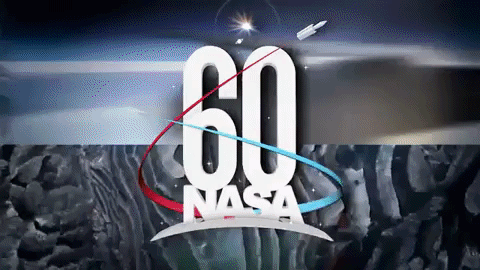
We have satellites in the sky, humans in orbit, and rovers on Mars. Very soon, we will be returning humankind to the Moon, and using it as a platform to travel to Mars and beyond.
And most importantly, we bring the universe to you.
What are your favorite NASA moments? We were only able to share a few of ours here, but if you want to learn about more important NASA milestones, check out 60 Moments in NASA History or our video, 60 Years in 60 Seconds.
Make sure to follow us on Tumblr for your regular dose of space: http://nasa.tumblr.com.
7K notes
·
View notes
Text
🌚 🌝
What’s a Blood Moon? And Other Lunar Eclipse Questions.
Tonight, Australians, Africans, Europeans, Asians and South Americans will have the opportunity to see the longest lunar eclipse of the century. Sorry North America.
Lunar eclipses occur about 2-4 times per year, when the Moon passes into the Earth’s shadow. In order to see a lunar eclipse, you must be on the night side of the Earth, facing the Moon, when the Earth passes in between the Moon and the Sun. Need help visualizing this? Here you go:
youtube
What’s the difference between a solar eclipse and a lunar eclipse?
An easy way to remember the difference between a solar eclipse and a lunar eclipse is that the word ‘eclipse’ refers to the object that is being obscured. During a solar eclipse, the Moon blocks the Sun from view. During a lunar eclipse, the Earth’s shadow obscures the Moon.
youtube
Why does the Moon turn red?
You may have heard the term ‘Blood Moon’ for a lunar eclipse. When the Moon passes into the Earth’s shadow, it turns red. This happens for the exact same reason that our sunrises and sunsets here on Earth are brilliant shades of pinks and oranges. During a lunar eclipse, the only light reaching the Moon passes through the Earth’s atmosphere. The bluer, shorter wavelength light scatters and the longer wavelength red light passes through and makes it to the Moon.
youtube
What science can we learn from a lunar eclipse?
youtube
“During a lunar eclipse, the temperature swing is so dramatic that it’s as if the surface of the Moon goes from being in an oven to being in a freezer in just a few hours,” said Noah Petro, project scientist for our Lunar Reconnaissance Orbiter, or LRO, at our Goddard Space Flight Center in Greenbelt, Maryland.
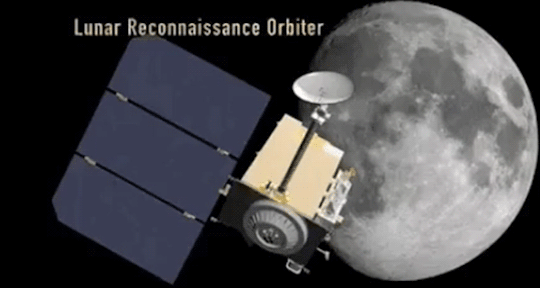
The Diviner team from LRO measures temperature changes on the Moon through their instrument on the spacecraft as well as through a thermal camera on Earth. How quickly or slowly the lunar surface loses heat helps scientists determine characteristics of lunar material, including its composition and physical properties.
When is the next lunar eclipse?
North Americans, don’t worry. If skies are clear, you can see the next lunar eclipse on January 21, 2019. The eclipse will be visible to North Americans, South Americans, and most of Africa and Europe.
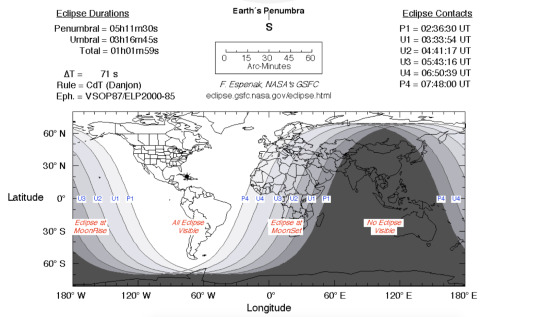
To keep an eye on the Moon with us check out nasa.gov/moon or follow us on Twitter and Facebook.
Make sure to follow us on Tumblr for your regular dose of space: http://nasa.tumblr.com.
4K notes
·
View notes
Text
🌌💥
Happy 4th of July… From Space!
In Hollywood blockbusters, explosions and eruptions are often among the stars of the show. In space, explosions, eruptions and twinkling of actual stars are a focus for scientists who hope to better understand their births, lives, deaths and how they interact with their surroundings. Spend some of your Fourth of July taking a look at these celestial phenomenon:

Credit: NASA/Chandra X-ray Observatory
An Astral Exhibition
This object became a sensation in the astronomical community when a team of researchers pointed at it with our Chandra X-ray Observatory telescope in 1901, noting that it suddenly appeared as one of the brightest stars in the sky for a few days, before gradually fading away in brightness. Today, astronomers cite it as an example of a “classical nova,” an outburst produced by a thermonuclear explosion on the surface of a white dwarf star, the dense remnant of a Sun-like star.

Credit: NASA/Hubble Space Telescope
A Twinkling Tapestry
The brilliant tapestry of young stars flaring to life resemble a glittering fireworks display. The sparkling centerpiece is a giant cluster of about 3,000 stars called Westerlund 2, named for Swedish astronomer Bengt Westerlund who discovered the grouping in the 1960s. The cluster resides in a raucous stellar breeding ground located 20,000 light-years away from Earth in the constellation Carina.

Credit: NASA/THEMIS/Sebastian Saarloos
An Illuminating Aurora
Sometimes during solar magnetic events, solar explosions hurl clouds of magnetized particles into space. Traveling more than a million miles per hour, these coronal mass ejections, or CMEs, made up of hot material called plasma take up to three days to reach Earth. Spacecraft and satellites in the path of CMEs can experience glitches as these plasma clouds pass by. In near-Earth space, magnetic reconnection incites explosions of energy driving charged solar particles to collide with atoms in Earth’s upper atmosphere. We see these collisions near Earth’s polar regions as the aurora. Three spacecraft from our Time History of Events and Macroscale Interactions during Substorms (THEMIS) mission, observed these outbursts known as substorms.

Credit: NASA/Hubble Space Telescope//ESA/STScI
A Shining Supermassive Merger
Every galaxy has a black hole at its center. Usually they are quiet, without gas accretions, like the one in our Milky Way. But if a star creeps too close to the black hole, the gravitational tides can rip away the star’s gaseous matter. Like water spinning around a drain, the gas swirls into a disk around the black hole at such speeds that it heats to millions of degrees. As an inner ring of gas spins into the black hole, gas particles shoot outward from the black hole’s polar regions. Like bullets shot from a rifle, they zoom through the jets at velocities close to the speed of light. Astronomers using our Hubble Space Telescope observed correlations between supermassive black holes and an event similar to tidal disruption, pictured above in the Centaurus A galaxy.

Credit: NASA/Hubble Space Telescope/ESA
A Stellar Explosion
Supernovae can occur one of two ways. The first occurs when a white dwarf—the remains of a dead star—passes so close to a living star that its matter leaks into the white dwarf. This causes a catastrophic explosion. However most people understand supernovae as the death of a massive star. When the star runs out of fuel toward the end of its life, the gravity at its heart sucks the surrounding mass into its center. At the turn of the 19th century, the binary star system Eta Carinae was faint and undistinguished. Our Hubble Telescope captured this image of Eta Carinae, binary star system. The larger of the two stars in the Eta Carinae system is a huge and unstable star that is nearing the end of its life, and the event that the 19th century astronomers observed was a stellar near-death experience. Scientists call these outbursts supernova impostor events, because they appear similar to supernovae but stop just short of destroying their star.

Credit: NASA/GSFC/SDO
An Eye-Catching Eruption
Extremely energetic objects permeate the universe. But close to home, the Sun produces its own dazzling lightshow, producing the largest explosions in our solar system and driving powerful solar storms.. When solar activity contorts and realigns the Sun’s magnetic fields, vast amounts of energy can be driven into space. This phenomenon can create a sudden flash of light—a solar flare.The above picture features a filament eruption on the Sun, accompanied by solar flares captured by our Solar Dynamics Observatory.
Make sure to follow us on Tumblr for your regular dose of space: http://nasa.tumblr.com
4K notes
·
View notes
Text
🌌🔭🤗
What’s Up - July 2018
What’s Up for July?
Mars is closest to Earth since 2003!
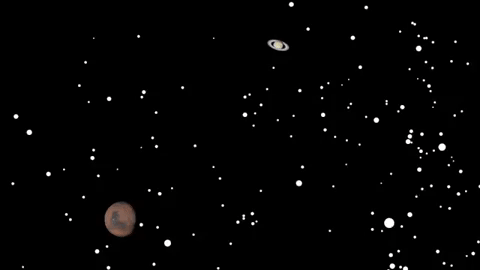
July’s night skies feature Mars opposition on the 27th, when Mars, Earth, and the Sun all line up, and Mars’ closest approach to Earth since 2003 on the 31st.
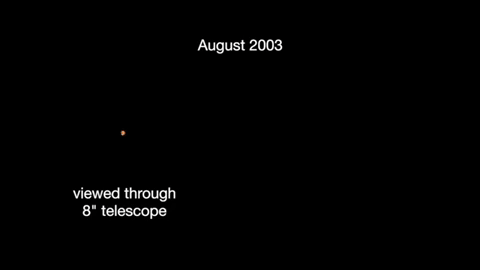
If you’ve been sky watching for 15 years or more, then you’ll remember August 2003, when Mars approached closer to Earth than it had for thousands of years.

It was a very small percentage closer, but not so much that it was as big as the moon as some claimed.
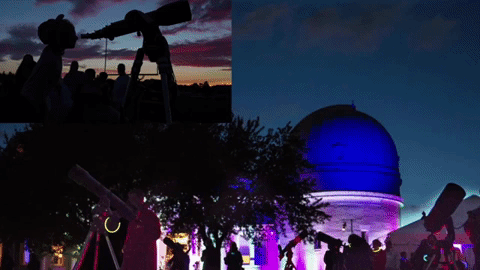
Astronomy clubs everywhere had long lines of people looking through their telescopes at the red planet, and they will again this month!

If you are new to stargazing, this month and next will be a great time to check out Mars.
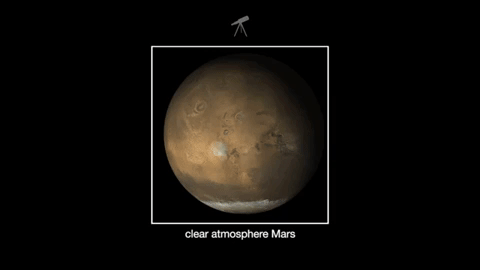
Through a telescope, you should be able to make out some of the light and dark features, and sometimes polar ice. Right now, though, a huge Martian dust storm is obscuring many features, and less planetary detail is visible.
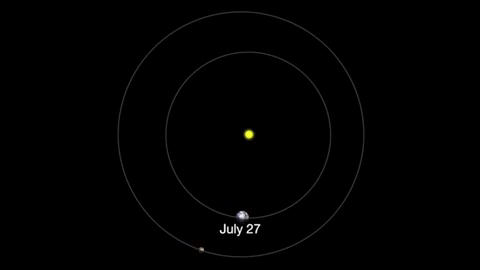
July 27th is Mars opposition, when Mars, Earth, and the Sun all line up, with Earth directly in the middle.
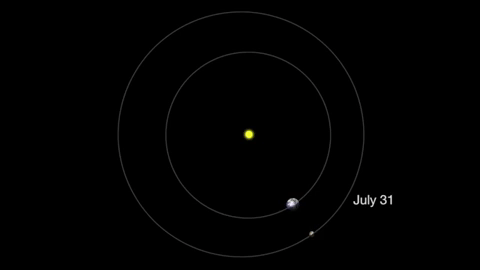
A few days later on July 31st is Mars’ closest approach. That’s when Mars and Earth are nearest to each other in their orbits around the Sun. Although there will be a lot of news focusing on one or the other of these two dates, Mars will be visible for many months.
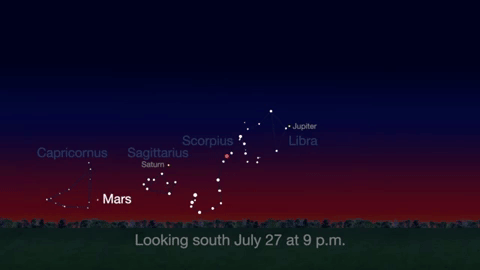
By the end of July, Mars will be visible at sunset.

But the best time to view it is several hours after sunset, when Mars will appear higher in the sky.
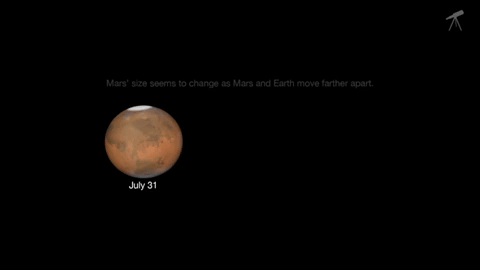
Mars will still be visible after July and August, but each month it will shrink in apparent size as it travels farther from Earth in its orbit around the Sun.
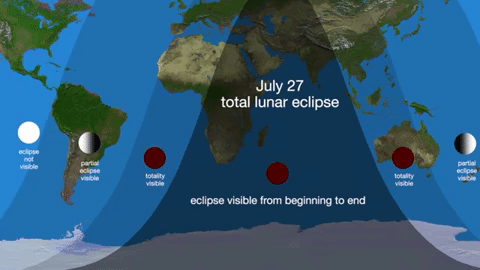
On July 27th a total lunar eclipse will be visible in Australia, Asia, Africa, Europe and South America.

For those viewers, Mars will be right next to the eclipsing moon!

Next month will feature August’s summer Perseids. It’s not too soon to plan a dark sky getaway for the most popular meteor shower of the year!
Watch the full What’s Up for July Video:
youtube
There are so many sights to see in the sky. To stay informed, subscribe to our What’s Up video series on Facebook.
Make sure to follow us on Tumblr for your regular dose of space: http://nasa.tumblr.com
3K notes
·
View notes
Photo




Underwater Realm: Black and White Photos Capture Breathtaking Moments Amongst Life in the Sea
730 notes
·
View notes
Text
5 Out-of-This World Technologies Developed for Our Webb Space Telescope
Our James Webb Space Telescope is the most ambitious and complex space science observatory ever built. It will study every phase in the history of our universe, ranging from the first luminous glows after the Big Bang, to the formation of solar systems capable of supporting life on planets like Earth, to the evolution of our own Solar System.
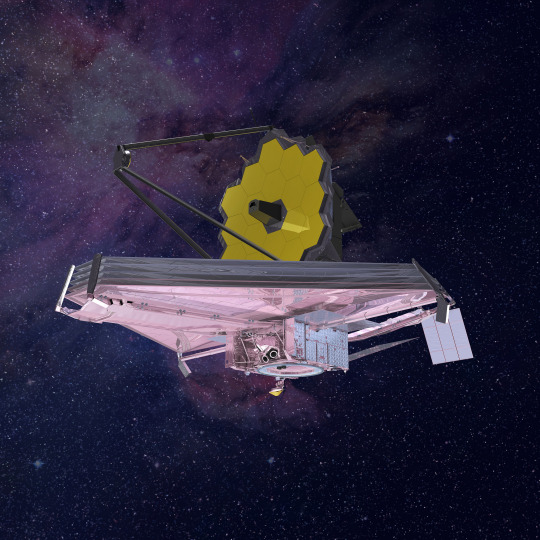
In order to carry out such a daring mission, many innovative and powerful new technologies were developed specifically to enable Webb to achieve its primary mission.
Here are 5 technologies that were developed to help Webb push the boundaries of space exploration and discovery:
1. Microshutters
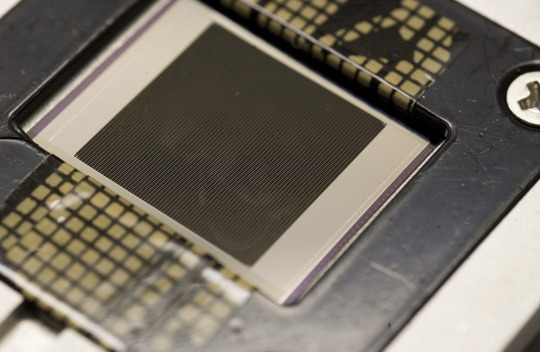
Microshutters are basically tiny windows with shutters that each measure 100 by 200 microns, or about the size of a bundle of only a few human hairs.
The microshutter device will record the spectra of light from distant objects (spectroscopy is simply the science of measuring the intensity of light at different wavelengths. The graphical representations of these measurements are called spectra.)

Other spectroscopic instruments have flown in space before but none have had the capability to enable high-resolution observation of up to 100 objects simultaneously, which means much more scientific investigating can get done in less time.
Read more about how the microshutters work HERE.
2. The Backplane
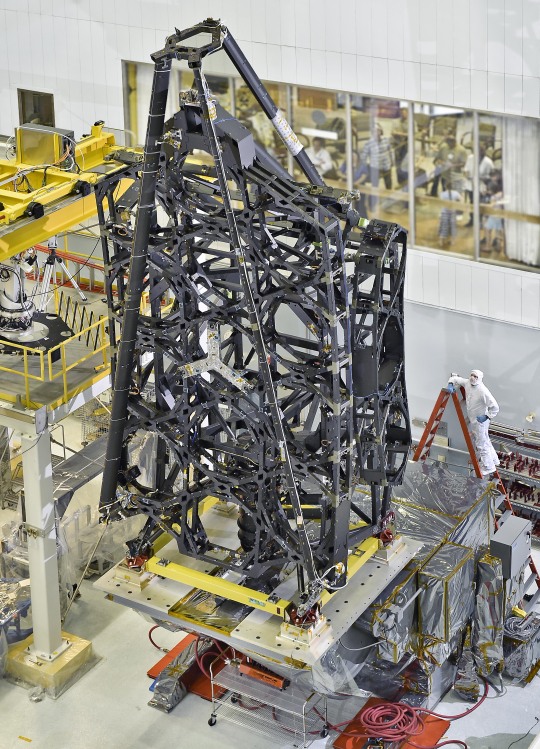
Webb’s backplane is the large structure that holds and supports the big hexagonal mirrors of the telescope, you can think of it as the telescope’s “spine”. The backplane has an important job as it must carry not only the 6.5 m (over 21 foot) diameter primary mirror plus other telescope optics, but also the entire module of scientific instruments. It also needs to be essentially motionless while the mirrors move to see far into deep space. All told, the backplane carries more than 2400kg (2.5 tons) of hardware.
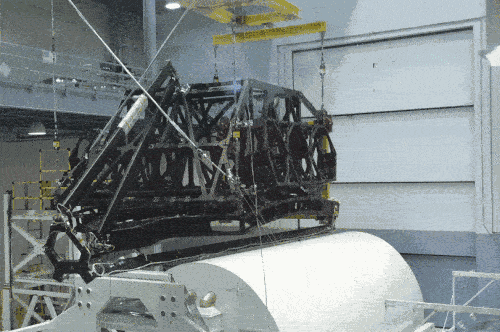
This structure is also designed to provide unprecedented thermal stability performance at temperatures colder than -400°F (-240°C). At these temperatures, the backplane was engineered to be steady down to 32 nanometers, which is 1/10,000 the diameter of a human hair!
Read more about the backplane HERE.
3. The Mirrors
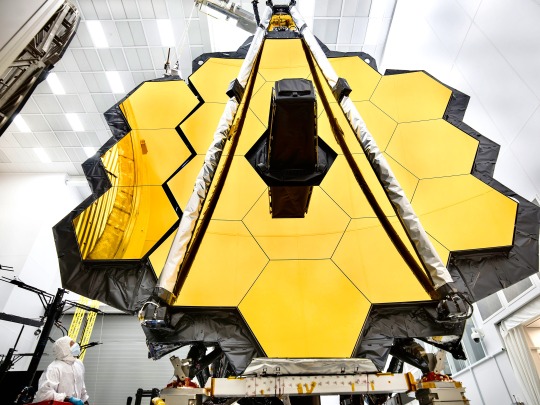
One of the Webb Space Telescope’s science goals is to look back through time to when galaxies were first forming. Webb will do this by observing galaxies that are very distant, at over 13 billion light years away from us. To see such far-off and faint objects, Webb needs a large mirror.
Webb’s scientists and engineers determined that a primary mirror 6.5 meters across is what was needed to measure the light from these distant galaxies. Building a mirror this large is challenging, even for use on the ground. Plus, a mirror this large has never been launched into space before!
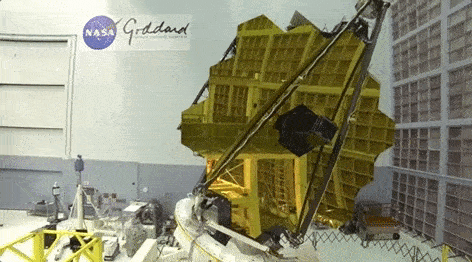
If the Hubble Space Telescope’s 2.4-meter mirror were scaled to be large enough for Webb, it would be too heavy to launch into orbit. The Webb team had to find new ways to build the mirror so that it would be light enough - only 1/10 of the mass of Hubble’s mirror per unit area - yet very strong.
Read more about how we designed and created Webb’s unique mirrors HERE.
4. Wavefront Sensing and Control
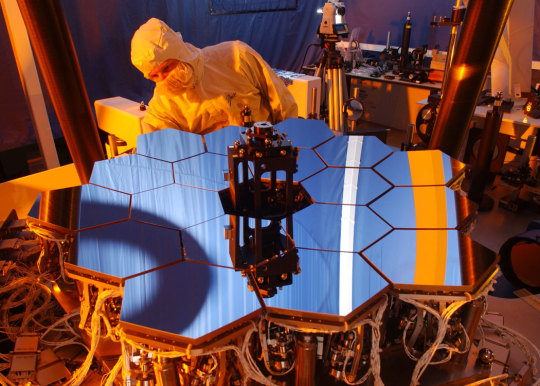
Wavefront sensing and control is a technical term used to describe the subsystem that was required to sense and correct any errors in the telescope’s optics. This is especially necessary because all 18 segments have to work together as a single giant mirror.
The work performed on the telescope optics resulted in a NASA tech spinoff for diagnosing eye conditions and accurate mapping of the eye. This spinoff supports research in cataracts, keratoconus (an eye condition that causes reduced vision), and eye movement – and improvements in the LASIK procedure.
Read more about the tech spinoff HERE.
5. Sunshield and Sunshield Coating

Webb’s primary science comes from infrared light, which is essentially heat energy. To detect the extremely faint heat signals of astronomical objects that are incredibly far away, the telescope itself has to be very cold and stable. This means we not only have to protect Webb from external sources of light and heat (like the Sun and the Earth), but we also have to make all the telescope elements very cold so they don’t emit their own heat energy that could swamp the sensitive instruments. The temperature also must be kept constant so that materials aren’t shrinking and expanding, which would throw off the precise alignment of the optics.
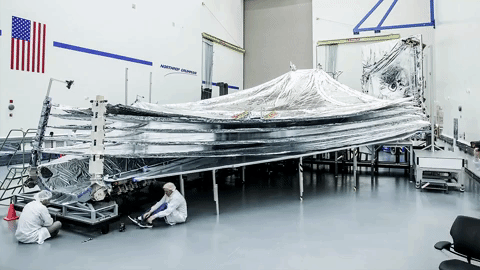
Each of the five layers of the sunshield is incredibly thin. Despite the thin layers, they will keep the cold side of the telescope at around -400°F (-240°C), while the Sun-facing side will be 185°F (85°C). This means you could actually freeze nitrogen on the cold side (not just liquify it), and almost boil water on the hot side. The sunshield gives the telescope the equivalent protection of a sunscreen with SPF 1 million!
Read more about Webb’s incredible sunshield HERE.
Learn more about the Webb Space Telescope and other complex technologies that have been created for the first time by visiting THIS page.
For the latest updates and news on the Webb Space Telescope, follow the mission on Twitter, Facebook and Instagram.
Make sure to follow us on Tumblr for your regular dose of space: http://nasa.tumblr.com.
4K notes
·
View notes
Text
Hunting for Organic Molecules on Mars

Did Mars once have life? To help answer that question, an international team of scientists created an incredibly powerful miniature chemistry laboratory, set to ride on the next Mars rover.

The instrument, called the Mars Organic Molecule Analyzer Mass Spectrometer (MOMA-MS), will form a key part of the ExoMars Rover, a joint mission between the European Space Agency (ESA) and Roscosmos. A mass spectrometer is crucial to send to Mars because it reveals the elements that can be found there. A Martian mass spectrometer takes a sample, typically of powdered rock, and distinguishes the different elements in the sample based on their mass.

After 8 years of designing, building, and testing, NASA scientists and engineers from NASA’s Goddard Space Flight Center said goodbye to their tiny chemistry lab and shipped it to Italy in a big pink box. Building a tiny instrument capable of conducting chemical analysis is difficult in any setting, but designing one that has to launch on a huge rocket, fly through the vacuum of space, and then operate on a planet with entirely different pressure and temperature systems? That’s herculean. And once on Mars, MOMA has a very important job to do. NASA Goddard Center Director Chris Scolese said, “This is the first intended life-detecting instrument that we have sent to Mars since Viking.”

The MOMA instrument will be capable of detecting a wide variety of organic molecules. Organic compounds are commonly associated with life, although they can be created by non-biological processes as well. Organic molecules contain carbon and hydrogen, and can include oxygen, nitrogen, and other elements.

To find these molecules on Mars, the MOMA team had to take instruments that would normally occupy a couple of workbenches in a chemistry lab and shrink them down to roughly the size of a toaster oven so they would be practical to install on a rover.
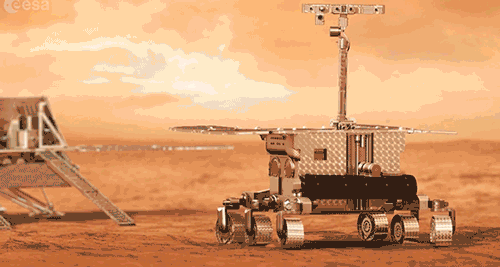
MOMA-MS, the mass spectrometer on the ExoMars rover, will build on the accomplishments from the Sample Analysis at Mars (SAM), an instrument suite on the Curiosity rover that includes a mass spectrometer. SAM collects and analyzes samples from just below the surface of Mars while ExoMars will be the first to explore deep beneath the surface, with a drill capable of taking samples from as deep as two meters (over six feet). This is important because Mars’s thin atmosphere and spotty magnetic field offer little protection from space radiation, which can gradually destroy organic molecules exposed on the surface. However, Martian sediment is an effective shield, and the team expects to find greater abundances of organic molecules in samples from beneath the surface.
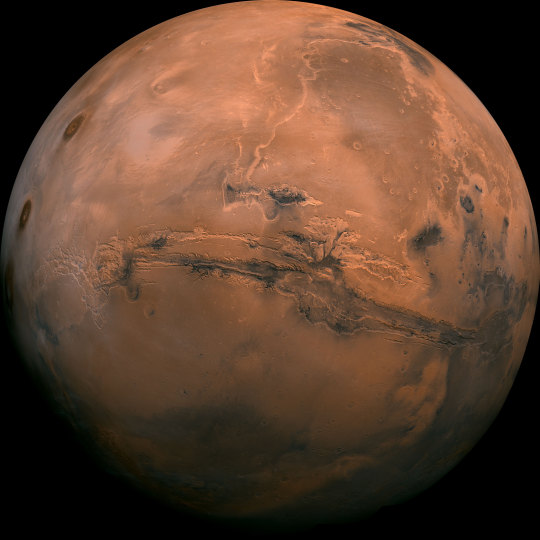
On completion of the instrument, MOMA Project Scientist Will Brinckerhoff praised his colleagues, telling them, “You have had the right balance of skepticism, optimism, and ambition. Seeing this come together has made me want to do my best.”
In addition to the launch of the ESA and Roscosmos ExoMars Rover, in 2020, NASA plans to launch the Mars 2020 Rover, to search for signs of past microbial life. We are all looking forward to seeing what these two missions will find when they arrive on our neighboring planet.
youtube
Learn more about MOMA HERE.
Learn more about ExoMars HERE.
Follow @NASASolarSystem on Twitter for more about our missions to other planets.
Make sure to follow us on Tumblr for your regular dose of space: http://nasa.tumblr.com.
3K notes
·
View notes
Text
#EarthDay
Earth from Afar
“It suddenly struck me that that tiny pea, pretty and blue, was the Earth. I put up my thumb and shut one eye, and my thumb blotted out the planet Earth. I didn’t feel like a giant. I felt very, very small.” - Neil Armstrong, Apollo 11

This week we’re celebrating Earth Day 2018 with some of our favorite images of Earth from afar…
At 7.2 million Miles…and 4 Billion Miles

Voyager famously captured two unique views of our homeworld from afar. One image, taken in 1977 from a distance of 7.3 million miles (11.7 million kilometers) (above), showed the full Earth and full Moon in a single frame for the first time in history. The second (below), taken in 1990 as part of a “family portrait of our solar system from 4 billion miles (6.4 billion kilometers), shows Earth as a tiny blue speck in a ray of sunlight.” This is the famous “Pale Blue Dot” image immortalized by Carl Sagan.

“This was our willingness to see the Earth as a one-pixel object in a far greater cosmos,” Sagan’s widow, Ann Druyan said of the image. “It’s that humility that science gives us. That weans us from our childhood need to be the center of things. And Voyager gave us that image of the Earth that is so heart tugging because you can’t look at that image and not think of how fragile, how fragile our world is. How much we have in common with everyone with whom we share it; our relationship, our relatedness, to everyone on this tiny pixel.“
A Bright Flashlight in a Dark Sea of Stars

Our Kepler mission captured Earth’s image as it slipped past at a distance of 94 million miles (151 million kilometers). The reflection was so extraordinarily bright that it created a saber-like saturation bleed across the instrument’s sensors, obscuring the neighboring Moon.
Hello and Goodbye

This beautiful shot of Earth as a dot beneath Saturn’s rings was taken in 2013 as thousands of humans on Earth waved at the exact moment the spacecraft pointed its cameras at our home world. Then, in 2017, Cassini caught this final view of Earth between Saturn’s rings as the spacecraft spiraled in for its Grand Finale at Saturn.
‘Simply Stunning’

”The image is simply stunning. The image of the Earth evokes the famous ‘Blue Marble’ image taken by astronaut Harrison Schmitt during Apollo 17…which also showed Africa prominently in the picture.“ -Noah Petro, Deputy Project Scientist for our Lunar Reconnaissance Orbiter mission.
Goodbye—for now—at 19,000 mph

As part of an engineering test, our OSIRIS-REx spacecraft captured this image of Earth and the Moon in January 2018 from a distance of 39.5 million miles (63.6 million kilometers). When the camera acquired the image, the spacecraft was moving away from our home planet at a speed of 19,000 miles per hour (8.5 kilometers per second). Earth is the largest, brightest spot in the center of the image, with the smaller, dimmer Moon appearing to the right. Several constellations are also visible in the surrounding space.
The View from Mars

A human observer with normal vision, standing on Mars, could easily see Earth and the Moon as two distinct, bright "evening stars.”
Moon Photobomb

“This image from the Deep Space Climate Observatory (DSCOVR) satellite captured a unique view of the Moon as it moved in front of the sunlit side of Earth in 2015. It provides a view of the far side of the Moon, which is never directly visible to us here on Earth. “I found this perspective profoundly moving and only through our satellite views could this have been shared.” - Michael Freilich, Director of our Earth Science Division.
Eight Days Out

Eight days after its final encounter with Earth—the second of two gravitational assists from Earth that helped boost the spacecraft to Jupiter—the Galileo spacecraft looked back and captured this remarkable view of our planet and its Moon. The image was taken from a distance of about 3.9 million miles (6.2 million kilometers).
A Slice of Life

Earth from about 393,000 miles (633,000 kilometers) away, as seen by the European Space Agency’s comet-bound Rosetta spacecraft during its third and final swingby of our home planet in 2009.
So Long Earth

The Mercury-bound MESSENGER spacecraft captured several stunning images of Earth during a gravity assist swingby of our home planet on Aug. 2, 2005.
Earth Science: Taking a Closer Look

Our home planet is a beautiful, dynamic place. Our view from Earth orbit sees a planet at change. Check out more images of our beautiful Earth here.
Join Our Earth Day Celebration!
youtube
We pioneer and supports an amazing range of advanced technologies and tools to help scientists and environmental specialists better understand and protect our home planet - from space lasers to virtual reality, small satellites and smartphone apps.
To celebrate Earth Day 2018, April 22, we are highlighting many of these innovative technologies and the amazing applications behind them.
Learn more about our Earth Day plans HERE.
Make sure to follow us on Tumblr for your regular dose of space: http://nasa.tumblr.com
6K notes
·
View notes
Text
Jupiter's Great Red Spot Getting Taller as it Shrinks
Discover how a team of our scientists has uncovered evidence that Jupiter’s Great Red Spot is growing taller as it gets smaller.
Though once big enough to swallow three Earths with room to spare, Jupiter’s Great Red Spot has been shrinking for a century and a half. Nobody is sure how long the storm will continue to contract or whether it will disappear altogether.

A new study suggests that it hasn’t all been downhill, though. The storm seems to have increased in area at least once along the way, and it’s growing taller as it gets smaller.

Observations of Jupiter date back centuries, but the first confirmed sighting of the Great Red Spot was in 1831. But until then, researchers aren’t certain whether earlier observers who saw a red spot on Jupiter were looking at the same storm.

Amy Simon, an expert in planetary atmospheres at our Goddard Space Flight Center in Greenbelt, Maryland, and her team traced the evolution of the Great Red Spot, analyzing its size, shape, color and drift rate. They also looked at the storm’s internal wind speeds, when that information was available from spacecraft.

This new study confirms that the storm has been decreasing in diameter overall since 1878 and is now big enough to accommodate just over one Earth at this point. Then again, the historical record indicates the area of the spot grew temporarily in the 1920s. Scientists aren’t sure why it grew for a bit.

Because the storm has been contracting, the researchers expected to find the already-powerful internal winds becoming even stronger, like an ice skater who spins faster as she pulls in her arms.

But that’s not what is happening. Instead of spinning faster, the storm appears to be forced to stretch up. It’s almost like clay being shaped on a potter’s wheel. As the wheel spins, an artist can transform a short, round lump into a tall, thin vase by pushing inward with his hands. The smaller he makes the base, the taller the vessel will grow.

The Great Red Spot’s color has been deepening, too, becoming is a more intense orange color since 2014. Researchers aren’t sure why that’s happening, but it’s possible that the chemicals coloring the storm are being carried higher into the atmosphere as the spot stretches up. At higher altitudes, the chemicals would be subjected to more UV radiation and would take on a deeper color.

In some ways, the mystery of the Great Red Spot only seems to deepen as the iconic storm gets smaller. Researchers don’t know whether the spot will shrink a bit more and then stabilize, or break apart completely.
For more information, go here/watch this:
youtube
For the full story, click HERE.
Make sure to follow us on Tumblr for your regular dose of space: http://nasa.tumblr.com.
4K notes
·
View notes
Video
Each year we hold a Day of Remembrance. Today, Jan. 25, we pay tribute to the crews of Apollo 1 and space shuttles Challenger and Columbia, as well as other NASA colleagues who lost their lives while furthering the cause of exploration and discovery.
#NASARemembers
Learn more about the Day of Remembrance HERE.
Make sure to follow us on Tumblr for your regular dose of space: http://nasa.tumblr.com.
4K notes
·
View notes
Photo







Artists Recreate Elaborate Baroque Wigs Entirely Out of Paper
480 notes
·
View notes
Photo

(2016-1956)-19j #Family #birthday #dad 💙 (at Guer)
0 notes
Quote
My heart swings back and forth between the need for routine and the urge to run.
Unknown (via onlinecounsellingcollege)
6K notes
·
View notes
Photo

#OneBookaWeek - n°3 Bertalan Mesko - the guide to the future of medecine
0 notes
Photo

#EXOconference #paris ✨😄🤓👾👽 (à Palais des congrès de Paris)
1 note
·
View note
Photo

Just received it ! Thank you guys ! #NinjaValence #science_ninjas #play & #learn
0 notes


